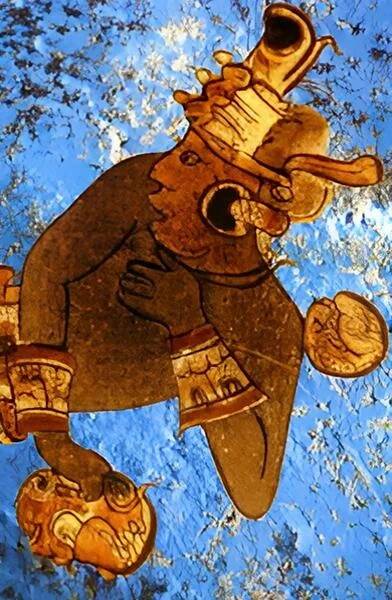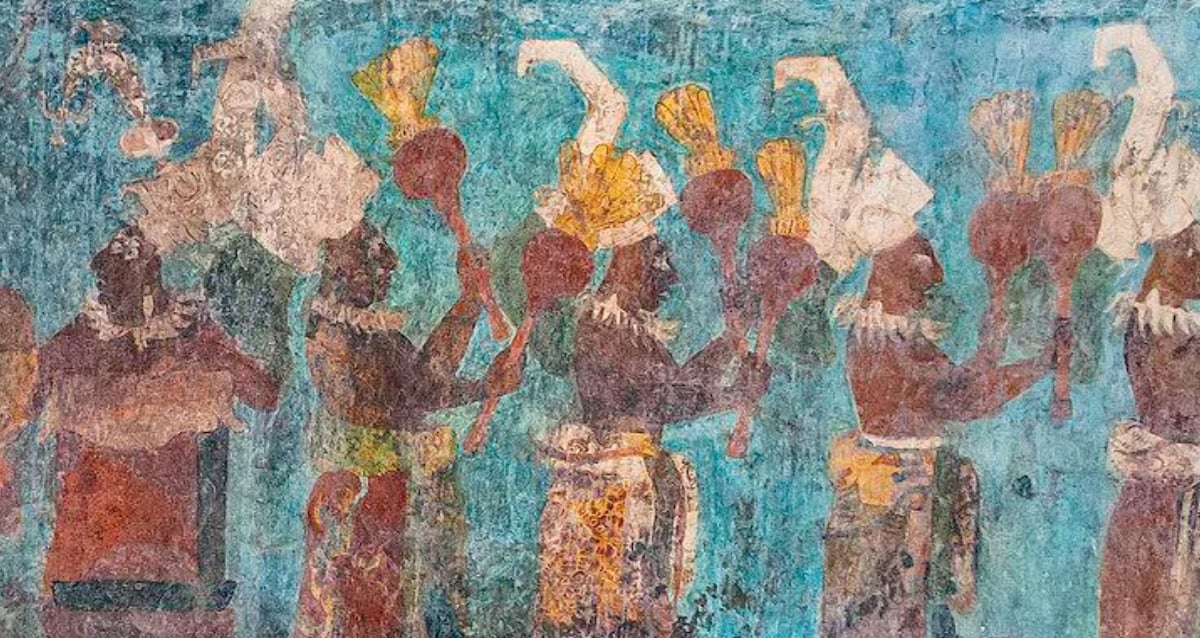Scientists Crack the Ancient Mystery Behind the Mesmerizing ‘Maya Blue’ Pigment—And the Secrets Are Stunning
The pigment was also associated with the rain god Chaak. Chaak, like many Mesoamerican gods, also happened to be a god of human sacrifice. Rituals to summon the rain involved painting a victim in Maya blue and sacrificing them to Chaak, hoping the god would be appeased and bestow water upon the land.

Public DomainA painting of a Maya warrior, with a Maya blue background.
“We knew blue was a very important color,” Dean Arnold told The New York Times in a 2008 interview. “It was very, very important for the priests and very important for ritual.”
Before Arnold began his own work, scientists first identified some of the components used to make Maya blue back in the 1960s, when chemical analysis of the pigment identified indigo and a clay mineral known as palygorskite as key components. These elements alone weren’t enough to reproduce the color, though, and the mystery of how, where, and when the Maya created this pigment still remained largely shrouded in mystery.
Eventually, Arnold and his team re-examined a Maya bowl that had been sitting at the Field Museum in Chicago for decades, ever since it, numerous other artifacts, and 127 skeletons were uncovered by explorer Edward Thompson in the early 20th century. Thompson had found the artifacts at the bottom of a well in Chichén Itzá, where he also found a 14-foot-layer of blue sediment. Suddenly, with help from these relics, Arnold was able to recreate the color.
How This Fabled Pigment Is Made: Reproducing Maya Blue In The Modern Age
While the exact details of Arnold’s 2008 study are not widely published, his work contributed significantly to understanding how the Maya might have made Maya blue.












